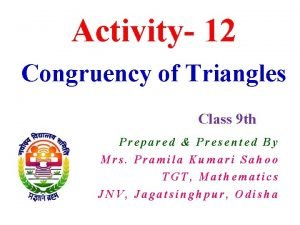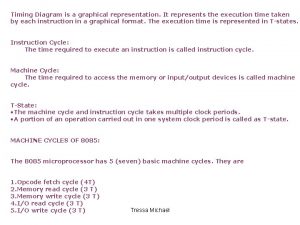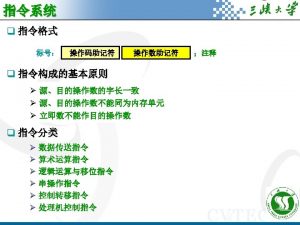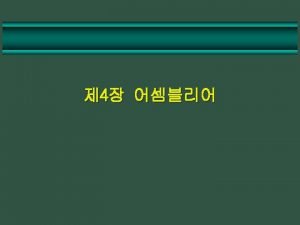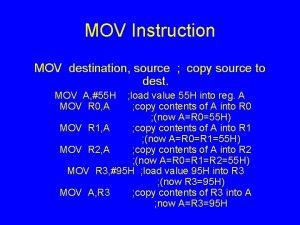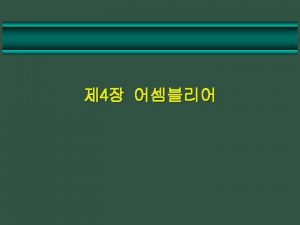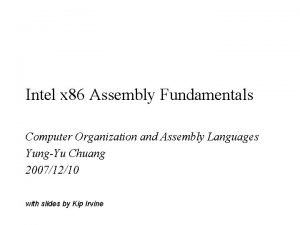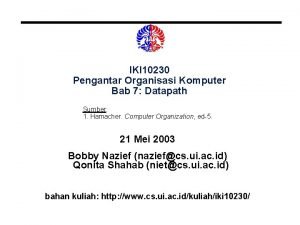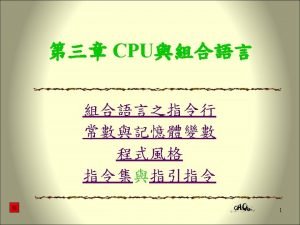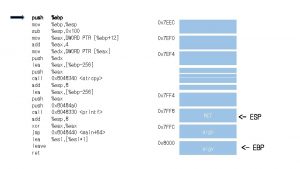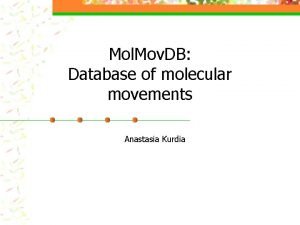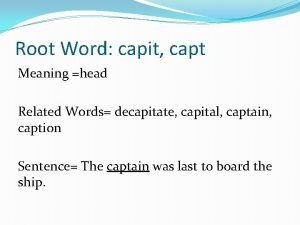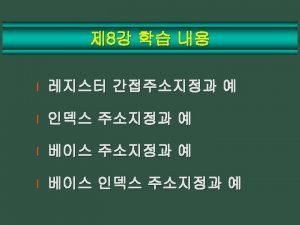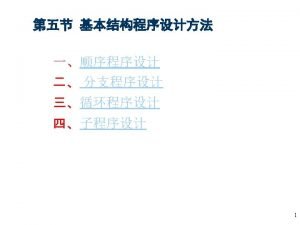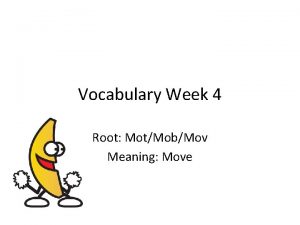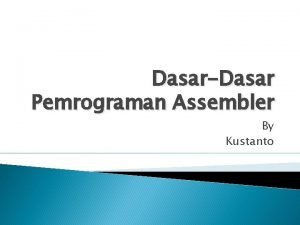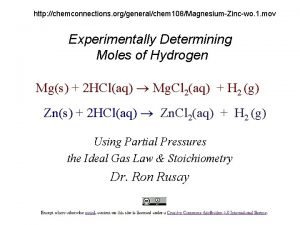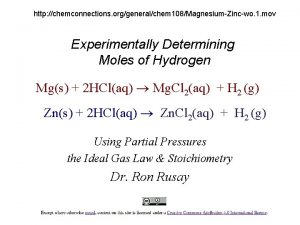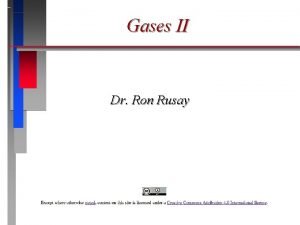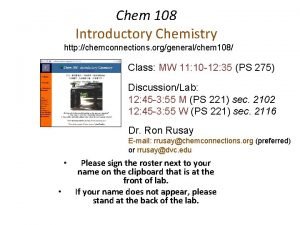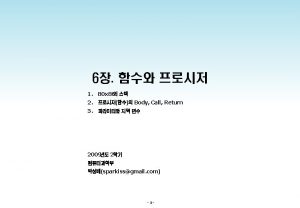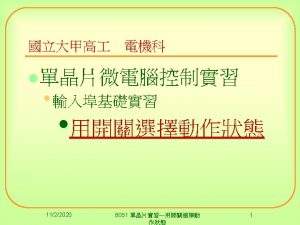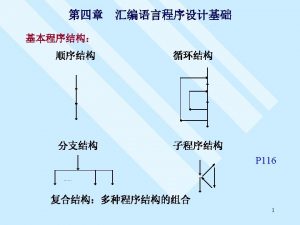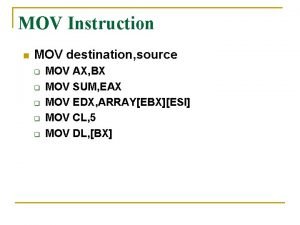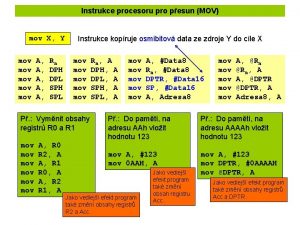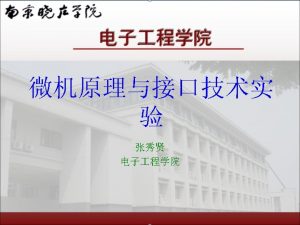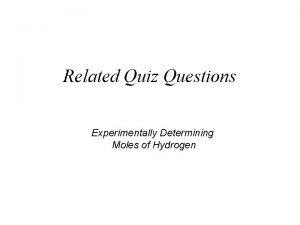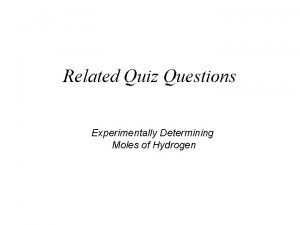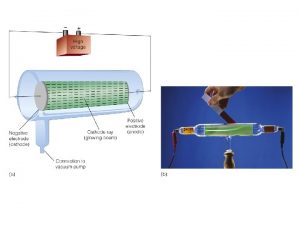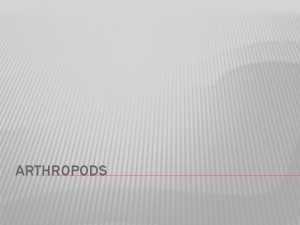http chemconnections orggeneralchem 108MagnesiumZincwo 1 mov Experimentally Determining































- Slides: 31

http: //chemconnections. org/general/chem 108/Magnesium-Zinc-wo. 1. mov Experimentally Determining Moles of Hydrogen Mg(s) + 2 HCl(aq) Mg. Cl 2(aq) + H 2 (g) Zn(s) + 2 HCl(aq) Zn. Cl 2(aq) + H 2 (g) Using Partial Pressures the Ideal Gas Law & Stoichiometry Dr. Ron Rusay

Handouts • Select a partner and get 2 handouts which replace Lab Manual pp. . • Quickly read the Background section.

Handouts • Refer to the Procedure section and follow the next few slides that correspond to the instructions


What is wrong with this set up? Mg or Zn

Mg(s) + 2 HCl(aq) Mg. Cl 2(aq) + H 2 (g) Zn(s) + 2 HCl(aq) Zn. Cl 2(aq) + H 2 (g)

Mg or Zn

Handouts • Refer to the Gas Stoichiometry replacement Report Form • Experimental data is to be obtained for the reaction of a known mass of magnesium metal: Mg(s) + 2 HCl(aq) Mg. Cl 2(aq) + H 2 (g) • The volume of hydrogen, pressure and temperature determined and recorded. • Moles of hydrogen calculated using Ideal Gas Law calculations and compared to calculated theoretical moles.

Background Ideal Gas Law PV = n RT • • • R = “proportionality” constant = 0. 08206 L atm mol P = pressure of gas in atm V = volume of gas in liters n = moles of gas T = temperature of gas in Kelvin

Standard Conditions Temperature, Pressure & Moles • “STP” • For 1 mole of a gas at STP: • P = 1 atmosphere • T = C (273. 15 K) • The molar volume of an ideal gas is 22. 42 liters at STP

Isobaric process: pressure constant Isochoric process: volume constant Isothermal process: temperature constant P 1 V 1 = P 2 V 2 P V V 1 / n 1 = V 2 / n 2 V n Combined Gas Law P 1 V 1 / T 1 = P 2 V 2 / T 2 V 1 / T 1 = V 2 / T 2 V T Standard Conditions (STP) 273 K, 1. 0 atm, R = 0. 08206 L atm/ K mol @STP 1 mole of any “ideal” gas has A volume of 22. 4 Liters.

Hydrogen & the Ideal Gas Law n H (g) = PV / RT 2 • • n = moles H 2(g) P H 2(g) = pressure of H 2(g) in atm (mm Hg atm) V = experimental volume (m. L L) T = experimental temperature (o. C K) Mg(s) + 2 HCl(aq) Mg. Cl 2(aq) + H 2 (g)

Total Pressure: Sum of the Partial Pressures • For a mixture of gases, the total pressure is the sum of the pressures of each gas in the mixture. PTotal = P 1 + P 2 + P 3 +. . . PTotal n Total n. Total = n 1 + n 2 + n 3 +. . .

• P H 2(g) = P Total (barometric) - P H 2 O (g) [TABLE] - P HCl (g) = HCl Height (mm) ÷ 12. 95 ______ HCl Height (mm) x 0. 0772 ______ Density Hg is 12. 95 times > density HCl(aq) 0. 772 mm Hg/cm of acid solution

Ideal Gas Law: Moles / Avogadro’s Law n H (g) = PV / RT 2 • • • n = moles H 2(g) P H 2(g) = pressure of H 2(g) in atm (mm Hg atm) P H 2(g) = P Total (barometric) - P H 2 O (g) [TABLE] - P HCl (g) V = experimental volume (m. L L) T = experimental temperature (o. C K) R = 0. 082057338 L atm K− 1 mol− 1 (constant) Mg(s) + 2 HCl(aq) Mg. Cl 2(aq) + H 2 (g) Zn(s) + 2 HCl(aq) Zn. Cl 2(aq) + H 2 (g)

Handouts • Refer to Report Form Part I: Example using Zinc Zn(s) + 2 HCl(aq) Zn. Cl 2(aq) + H 2 (g) Mole Calculations: • Stoichiometry Calculation • Ideal Gas Law Calculations • Comparison (% Error)

Stoichiometry Theoretical Moles Hydrogen (Part I: Zinc Calculation) n H (g) = n Zn(s) 2 Zn(s) + 2 HCl(aq) Zn. Cl 2(aq) + H 2 (g) mass (g) Zn(s) = mass sample (g) = 0. 2100 g moles H 2(g) = moles Zn(s) = = mass sample (g) _____________________ Molar Mass Zn(s) 0. 2100 g Zn(s) _____________________ 65. 39 g/mol Zn(s) = 0. 003211 moles (Theoretical Moles Hydrogen)

Moles : Ideal Gas Law (Part I: Experimental Hydrogen Calculation) Zn(s) + 2 HCl(aq) Zn. Cl 2(aq) + H 2 (g) n H (g) = PV / RT 2 • • • n = moles H 2(g) P H 2(g) = pressure of H 2(g) in atm (mm Hg atm) P H 2(g) = P Total (barometric) - P H 2 O (g) [TABLE] - P HCl (g) V = experimental volume (m. L L) T = experimental temperature (o. C K) R = 0. 082057338 L atm K− 1 mol− 1

Moles : Ideal Gas Law Part I: Hydrogen Calculation, (Refer to Form’s Data) Zn(s) + 2 HCl(aq) Zn. Cl 2(aq) + H 2 (g) n H (g) = PV / RT 2 • • • n = moles H 2(g) P H 2(g) = pressure of H 2(g) in atm (mm Hg atm) P H 2(g) = 29. 98 inches Hg (barometric) - 19. 8 mm Hg H 2 O (g) [TABLE] - P HCl (g) V = 81. 5 m. L (m. L L) P HCl (g) T = 22. 0 o. C (o. C K) R = 0. 082057338 L atm K− 1 mol− 1 19. 2 cm 10. 0 cm

• P H 2(g) = P Total (barometric) - P H 2 O (g) [TABLE] - P HCl (g) = 19. 2 cm Hg - 10. 0 cm Hg = 92 mm Hg HCl Height (mm) x 0. 0772 HCl Height (mm) ÷ 12. 95 = 7. 1 mm Hg ______ = 7. 1 mm Hg _____ Density Hg is 12. 95 times > density HCl(aq) 0. 772 mm Hg/cm of acid solution

Moles : Ideal Gas Law (Part I: Hydrogen Calculation) Zn(s) + 2 HCl(aq) Zn. Cl 2(aq) + H 2 (g) n H (g) = PV / RT = 0. 00325 moles H (g) 2 • • • 2 n = moles H 2(g) P H 2(g) = pressure of H 2(g) in atm (mm Hg atm) P H 2(g) = 761. 5 mm Hg (barometric) - 19. 8 mm Hg H 2 O (g) 7. 1 mm Hg HCl (g) = 734. 6 mm Hg • = 0. 9666 atm P HCl (g) • V = 0. 0815 L • T = 295. 1 K 19. 2 cm 10. 0 R = 0. 08206 L atm K− 1 mol− 1 cm

% Error Theoretical Moles Hydrogen vs. Experimental (Part I: Calculation) Zn(s) + 2 HCl(aq) Zn. Cl 2(aq) + H 2 (g) mass (g) Zn(s) = mass sample (g) = 0. 2100 g = 0. 003211 moles H 2(g) theoretical % Error = experimental moles H 2(g) - theoretical moles H 2(g) _____________________________________________________--________ theoretical moles H 2(g = = 0. 00325 moles - 0. 003211 moles ________________________________________ 0. 003211 moles 1. 32 % x 100

Molar Mass of any Gas (Hydrogen for example) • PV = n RT • n = g of gas/ MM gas [MM gas = g/mol] • PV = (g of gas/ MM gas)RT • MM gas = g of gas/V (RT/P) Density of gas • MM gas = g of gas/V (RT/P) • MM gas = density of gas (RT/P)

Magnesium Sample • Complete Report Form replacement pg. 58 Part I: Zn(s) + 2 HCl(aq) Zn. Cl 2(aq) + H 2 (g) Mole Calculations: • • • Stoichiometry Calculation Ideal Gas Law Calculations Comparison (% Error) Bring completed Report Form to Dr. R. to get sample. Then get equipment from stockroom and complete data acquisition for Part II. Have checked before leaving lab today.

Related Quiz Questions Experimentally Determining Moles of Hydrogen

QUESTION The density of an unknown atmospheric gas pollutant was experimentally determined to be 1. 964 g/ L @ 0 o. C and 760 torr. • What is the molar mass of the gas? • What might the gas be? A) CO B) SO 2 C) H 2 O D) CO 2

QUESTION Freon-12, CF 2 Cl 2, a “safe” compressible gas, was widely used from 1935 -1994 as a refrigerant in refrigerators, freezers, and air conditioning systems. However, it had been shown to be a greenhouse gas and to catalytically destroy the ozone layer in a ratio of >14, 000: 1. It was phased out and banned. 200. ml of Freon-12 was collected by syringe. It weighed 0. 927 grams, had a temperature of 30. 0°C (303. 1 K), and a pressure of 730 mm of Hg (. What is the experimental molar mass of Freon-12? • • • 12. 1 g/mol 84 g/mol 92. 7 g/mol 115 g/mol 121. g/mol R = 0. 082 L atm K− 1 mol− 1

QUESTION 0. 0820 grams of a volatile compound in the gas phase, which smells like fresh raspberries, was trapped in a syringe. It had a volume of 12. 2 m. L at 1. 00 atmosphere of pressure and 25. 0°C. What is the molar mass of this pleasant smelling compound ? A) B) C) D) 13. 8 g/mol 164 g/mol 40. 9 g/mol 224 g/mol

QUESTION For the compound that smells like fresh raspberries, the following structure matches its molecular formula, C 10 H 12 O 2. A) TRUE B) FALSE

QUESTION Which sequence represents the gases in order of increasing density at STP? A) Fluorine < Carbon monoxide < Chlorine < Argon B) Carbon monoxide < Fluorine < Argon < Chlorine C) Argon < Carbon monoxide < Chlorine < Fluorine D) Fluorine < Chlorine < Carbon monoxide < Argon

QUESTION Real gases exhibit their most “ideal” behavior at which relative conditions? A) B) C) D) Low temperatures and low pressures High temperatures and high pressures High temperatures and low pressures Low temperatures and high pressures
 Activity on congruence of triangles class 9
Activity on congruence of triangles class 9 Siat.ung.ac.id
Siat.ung.ac.id Http //mbs.meb.gov.tr/ http //www.alantercihleri.com
Http //mbs.meb.gov.tr/ http //www.alantercihleri.com Timing diagram of sta
Timing diagram of sta Mov ds
Mov ds Mov cx
Mov cx Mov source destination
Mov source destination Mov
Mov Mov al
Mov al When eax=12345678h and mov ax, 4000h then eax will be
When eax=12345678h and mov ax, 4000h then eax will be Pengantar organisasi komputer
Pengantar organisasi komputer Jmp pro 15 download
Jmp pro 15 download X0r jmp
X0r jmp Immediate addressing mode in 8086
Immediate addressing mode in 8086 Mov db
Mov db Root capt
Root capt Mov.c
Mov.c Addressing modes in assembly language
Addressing modes in assembly language Compiler
Compiler Puls latin root
Puls latin root Subroutine in 8085
Subroutine in 8085 Rzvan
Rzvan Data1.doi
Data1.doi Mov a, #89 h is the example of
Mov a, #89 h is the example of Mov statement example
Mov statement example Push ax
Push ax Move instruction in assembly language
Move instruction in assembly language Mob root word definition
Mob root word definition Jeu mov
Jeu mov Auma usa wiring diagram
Auma usa wiring diagram Movzx example
Movzx example Mov a,b
Mov a,b
